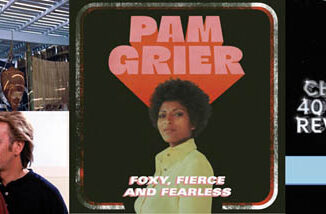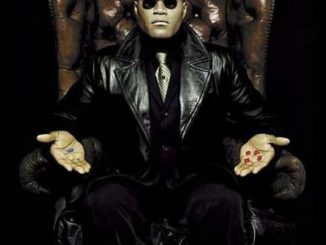You’ll probably know from my series of James Bond movie reviews [Quantum Of Solace is finally Coming Soon!] that I’m a bit of a 007 fan, and as well as owning several books about Bond along with all the Ian Fleming works, I’ve read quite a few others including all of the non-Fleming novels. Therefore, when our Webmistress offered me the chance to read and review a new book on the James Bond films – or rather an updated paperback second edition of a hardcover book which somehow avoided my radar in 2015 – I jumped at the chance, especially as it was written by two established authorities on the world’s least secret secret agent – Matthew Field and Ajay Chowdhury. However, not long after that I began to wonder several things, such as: How on earth a book could yet another book about Bond offer much that was new, that was fresh? Surely all the information detailing the history of the films has been unearthed? How many more times do I want to read the same facts and stories all over again?
Well my misgivings were unfounded. This is a simply excellent book which is recommended reading however great your interest in or knowledge of Bond is. If you’ve only recently seen all the films or have been a casual fan for ages and just want to broaden your knowledge, Some Kind Of Hero is a fine opportunity to get to know as much about the films as you can cram into 696 pages [well, it’s actually 817 pages but some of those are where the authors have meticulously quoted their sources]. However, the Bond connoisseur or geek should also find the book equally worthwhile, because the authors have carried out a substantial number of new interviews [they even state in the preface to the 2015 edition that they almost got to interview the notoriously close-lipped Sean Connery, and they actually did get him to say a few words for this edition which is quite some feat], revealed the actual truths behind anecdotes or half facts which have often been repeated so often that they’ve become lore, and even uncovered some new information. Another thing that was a nice surprise to me is that the authors have held back on giving their own opinions on matters, especially the quality of each film. Every Bond fan has their views on which films are better than others, and therefore usually finds him or herself disagreeing with what’s stated in books on some occasions, while those of us with a few unconventional opinions are tired of reading things like, Goldfinger is the best 007 film [I think several are better] or that The Man With The Golden Gun is the worst [I think several are worse].
The book begins in the early 1950’s when Fleming was already thinking about the possibility of his creation ending up on the silver screen, and I’ve certainly never read in as much detail about the many failed attempts to get Bond in the movies before. Then we go into some background about the original producers of the films Albert R. Broccoli and Harry Saltzman – people mention Connery, the girls, the directors etc – but it’s really because of these two men that we got a Bond movie series that was a huge success and is still going strong. A few readers might be tempted to skip to the chapters on the films here, but I recommend that you don’t – not unlike the films themselves, Field and Chowdhury write in quite a fast paced style and never dwell on anything for too long, while for the first time I got a real sense of the personalities of these two producers and their relationship with each other which of course eventually led to a split in 1975. Another thing the writers prove themselves to be very good at in what was quite a difficult balancing act is continually making the reader aware of the studio politics going on behind the scenes,and how important it was to the franchise, while never becoming boring, overly complex or detracting too much attention from the making of the films. I learnt quite a bit here too, and was most happy about it!
Of course each film is given its chapter. Most of these are of a similar length except for the one on Spectre, which is considerably longer, though being as it’s the most recent Bond film I guess that’s fine, and it was the first time I’d had the majority of the information about it in one place. Generally the films are raced through – no, not everything is mentioned – you’d need a book three times the size of this one to do that – but everything of importance is. Often stuff which other books have gone into more detail about just takes up a few sentences, which is fine because it keeps things pacy and allows for some clarification of other things and even some new stuff, and stuff that not many would have heard. I don’t claim to have read every single book on the Bond films, but I wouldn’t imagine that many have. Therefore you may enjoy as much as me nice little stories such as actor Robert Shaw challenging Connery to a foot race whilst making From Russia With Love. Shaw trained for a week while Connery didn’t bother. Shaw stormed ahead of Connery and led for much of the race but Connery eventually overtook him and won because he was wearing heavy duty boots that could withstand the rough terrain better than Shaw’s sports shoes. Also notable is learning about the full extent of writer Johanna Harwood’s contribution to the first two Bond movies which has been overlooked in the past. This book sets the record straight and makes it clear that she was a notable architect in the formation of the screen Bond and Bond movies.
Yet in terms of material sourced from new interviews, the most substantial is probably that derived from talking to George Lazenby, which ensures that the chapter on the making of my favourite Bond film is an especially strong and authentic-sounding read. Amongst several other nuggets, Lazenby claims that the producers set him up in a hotel and had girls brought to him to ensure that he wasn’t gay! Moving to much later on, the writers, through evidence that seems hard to refute, suggest that the ridiculous hate campaign against Daniel Craig when he was cast in Casino Royale can be linked to a PR company. The chapter on the non-Eon Bond film Never Say Never Again is also enlightening, while the writers make it easy to follow all the legal stuff involving Kevin McClory’s claims and bids for the rights to Bond. It’s kind of amusing how McClory keeps on popping up in the book just when you think you’ve heard the last of him. We also get the lowdown from Pierce Brosnan on his supposed ‘firing’ from the role. The book paints Eon Films as a company that’s hugely efficient and which often rewards success, but which can also be a bit ruthless if need be. As with everything else, Field and Chowdhury refuse to take sides – they just state the facts as their research has led them to believe and believe me their research appears to be incredibly extensive. To conclude though, they’re happy to offer their personal thoughts on Roger Moore. I think it’s great how the attitude to Moore’s 007 has substantially changed in Bond books over the years. I’m old enough to remember a time when you’d be hard put to find writing that mentioned his incarnation of the character in a good light.
There are only three sets of photographs, but that’s enough and there are a few fairly rare ones in the mix. There are also a few minor glitches, such as the odd typo and two sentences in the chapter on The Living Daylights that appear to be the wrong way round, hinting as a hasty reprinting unless these flaws were in the original edition too. It’s odd how the synopses for each film seems to get longer too. But overall this life long Bond fan got a hell of a lot out of this book and just loved reading it. However strong you liking or love for Bond is, I reckon that you will too. I really hope that Field and Chowdhury are able to update it every time a new movie comes out.






Be the first to comment